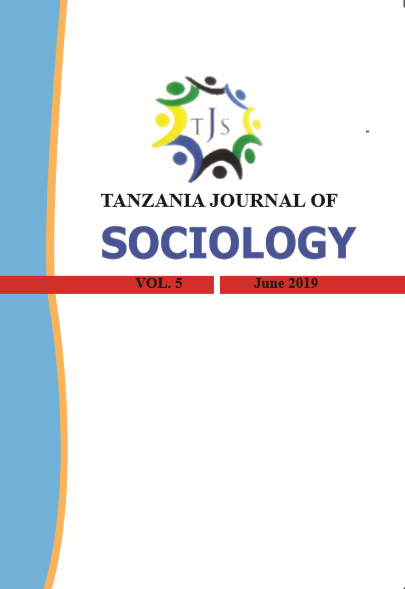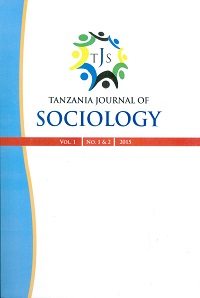Is it Cash or Card? National Health Insurance Scheme of Tanzania: A Decade and Half of Progress
Abstract
This paper explores the perspectives of Tanzanians since the introduction of the National Health Insurance Fund (NHIF) a decade and half ago. It examines the key objectives of the program by evaluating the impact of this program in meeting the health needs of Tanzanians. The study addressed specifc challenges posed by the program and experiences users have with the program. Study was undertaken in eastern Tanzania. Several respondents mentioned the easy access to better health provided by the scheme at a lower cost. Though several decried the poor quality of services and the rather limited options for accessing health care, most were of the view that Tanzania is on the right track in expanding health coverage to its citizens. As we better understand the role of social health insurance in Africa, the Tanzanian experience offers a window on how to expand health coverage to millions of Tanzanians.
Keywords: Health Insurance, access, Tanzania
References
Borghi, J.,S. Maluka, A. Kuwawenaruwa, S. Makawia, J. Tantau, G. Mtei, M. Ally, and J. Macha.(2013) "Promoting Universal Financial Protection: A Case Study of New Management of Community Health Insurance in Tanzania." Health Research Policy and Systems, 11 (21):1-13.
Criel, B. (1998). District Based Health Insurance in Sub- Saharan Africa. Brussels, Belgium : Studies in Health Services Organization and Policy, 9 :33-130
Criel. B.,W. Soors and P. Ndiaye ( 2007)."A view from beneath: Community Health Insurance in Africa." Tropical Medicine and International Health, 12 (2): 157-161
Gilson, L. (1997) "The Lessons of User Fees Experience in Africa." Health Policy and Planning, 12 :273-285.
Gilson, L., Russell, K. and Buse, K. (1997). "The Political Economy of User Fees with Targeting: Developing Equitable Health Financing Policy." Journal of International Development 80 (2): 97-105.
Kotoh,A.,Aryeetey, G., VanderGeest (2018) "Factors That Infuence Enrolment and Retention in Ghana ' s National Health Insurance Scheme." International Journal of Health Policy Management Vol 7. No 5:443-454.
Mwabu, G, Mwanzia, J. and Liambila, W. (1995)"User Charges in Government Health Facilities in Kenya: Effect on Attendance and Revenue." Health Policy and Planning 10 :164-170
McIntyre, D. (1997). Health Care Financing and Expenditure in South Africa: An Economic Evaluation. Ph.D.Dissertation. Cape Town, University of Cape Town.
Msambicchaka, L and Humba, E. (2011). A Historical Development of the National Health Insurance Fund of Tanzania: From Resistance to Radiance. Dar es Salaam, Semuka
International Ltd.
Ministry of Health and Social Welfare ( 2015) Health Sector Strategic Plan July-2015-June 2020 The United Republic of Tanzania.
Mwatawala,S.(2018) "Exploring The Coverage of National Health Insurance Fund to Informal Sector Workers in Tanzania." Unpublished Master ' s Thesis. University of Dar Es Salaam.
National Health Insurance Fund (2011). NHIF Financing Health Care. NHIF Actuarial an Statistical Bulletin.
National Health Insurance Fund (2015) NHIF Actuarial and Statistical Bulletin.
Pauly,M., Zwifel ,P., Scheffer,R.,Preker, .A (2006) " Private Health Insurance in Developing Countries."Health Affairs 25, No.2.:369-379.
Quaye, R. (2004) " Paying for Health Services in East Africa: A Research Note." Social Theory and Health 2 :94-105.
Quaye, R. (2010) Balancing Public and Private Health Care Systems. New York: University Press of America.
Schieber, G and Akiko Maeda (1997). A Curmudgeon ' s Guide to Financing Health Care in Developing Countries. Conference sponsored by the World Bank, Washington. D.C.
Shaw, P and Griffn, C. (1995) Financing Health Care in Sub0Saharan Africa Through User Fees and Insurance. Washington, DC. The World Bank.
Zikussoka, C. ( 2007) Assessment of Willingness to Pay for Social Health Insurance in Uganda . Kampala, Uganda, Health Net Consult.



